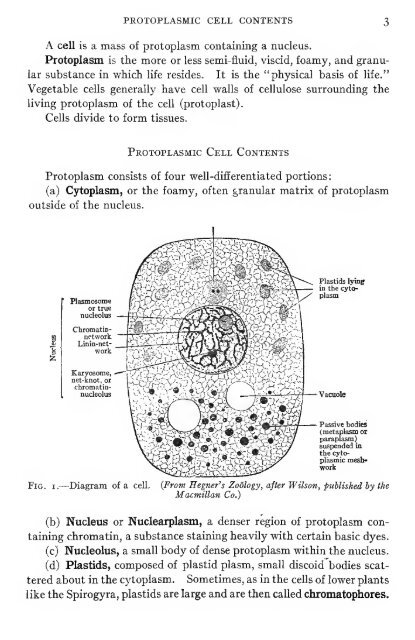Pharmaceutical botany - Lighthouse Survival Blog
Pharmaceutical botany - Lighthouse Survival Blog
Pharmaceutical botany - Lighthouse Survival Blog
Create successful ePaper yourself
Turn your PDF publications into a flip-book with our unique Google optimized e-Paper software.
PROTOPLASMIC CELL CONTENTS 3<br />
A cell is a mass of protoplasm containing a nucleus.<br />
Protoplasm is the more or less semi-fluid, viscid, foamy, and granu-<br />
lar substance in which life resides. It is the "physical basis of life."<br />
Vegetable cells generally have cell walls of cellulose surrounding the<br />
living protoplasm of the cell (protoplast).<br />
Cells divide to form tissues.<br />
Protoplasmic Cell Contents<br />
Protoplasm consists of four well-differentiated portions<br />
(a) Cytoplasm, or the foamy, often granular matrix of protoplasm<br />
outside of the nucleus.<br />
Vacuole<br />
Passive bodies<br />
(metaplasmor<br />
paraplasm)<br />
suspended in<br />
the cytoplasmicmeshwork<br />
Fig. I.—Diagram of a cell. {From Hegner's Zoology, after Wilson, published by the<br />
Macmillan Co.)<br />
(b) Nucleus or Nuclearplasm, a denser region of protoplasm con-<br />
taining chromatin, a substance staining heavily with certain basic dyes.<br />
(c) Nucleolus, a small body of dense protoplasm within the nucleus.<br />
(d) Plastids, composed of plastid plasm, small discoid bodies scat-<br />
tered about in the cytoplasm. Sometimes, as in the cells of lower plants<br />
like the Spirogyra, plastids are large and are then called chromatophores.
















